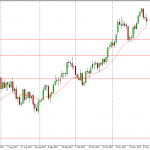In my last few posts, I’ve been sharply criticizing the portfolios delivered by the aggressively marketed and heavily publicized large generalist robo-advising firms. While their web sites are beautiful and incredibly easy to use, I find much to be desired in the portfolios they offer, a situation caused by dogmatic allegiance to quant scripts without much consideration to real-client suitability. Today, I’ll explore an example of an alternative approach.
A Framework
For starters, since I address U.S. investors whose financial needs are denominated in U.S. dollars, I would not invest in any ETF that owns securities whose returns are based on other currencies unless I have a fundamentally bearish view of the dollar. So at present, I avoid all of the non-U.S. ETFs used by robo investing firms. If I develop a view that causes me to want foreign exposure, I’d look for dollar-hedged ETFs with exposure to the markets I want. As to my core U.S. exposure, I will not touch a conventional fixed-income mutual fund or ETF, a product ill conceived for anything but a falling interest rate environment. I suggest CDs, direct ownership of bonds or in my personal case a a product ill conceived for anything but a falling interest rate environment.
As to equity exposure, I’m fine with use of the SPDR S&P 500 ETF (SPY) or the Vanguard Total Market ETF (VTI) as a core, although I’m hunting for a smart beta alternative to cut the typically unrecognized momentum bias that influences market cap weighted index funds. Many can stop there. But I prefer to use what I understand about investment fundamentals and factors to allocate all or some of my equity exposure to the pursuit of extra benefits, in this case, volatility reductions. These are not the stereotypically gunslinger tea-leaf-reading active strategies the Passive/Indexing crowd worries about. These strategies are every bit as disciplined and rational as anything any indexer has ever done, but they work with a different, and in my opinion better and more relevant, base of knowledge regarding why stocks behave as they do.
Smart Alpha Low Volatility Select – SP 500
This is a model I created, and which is now available for free on Portfolio123.com, for investors who are open to ongoing equity exposure, as many desire considering the long-term opportunities in this area and the difficulty of timing the market’s ups and downs but would like to reduce risk. It plays an extra-spice role comparable to that fulfilled by the plain-vanilla Value ETFs used by Betterment, the U.S. Large Cap Value, Mid Cap Value and Small Cap Value ETFs ($VTV, $VOE, and $VBR) but does purposefully rather than generically.
The goal here is, simply, to reduce risk. Classroom definitions or investment risk focus on such terms as Volatility, Standard Deviation, Beta, etc. I think that is misguided. These numbers come from historical share price data, meaning they are from the past. They tell you what happened yesterday. That would be fine if we could get in a time machine and go back to the past, but we can’t. We’re concerned about what volatility etc., will be in the future. When we use historic data to guide us (as we must since that’s all we have), we must do so thoughtfully, rather than naively.











Leave A Comment